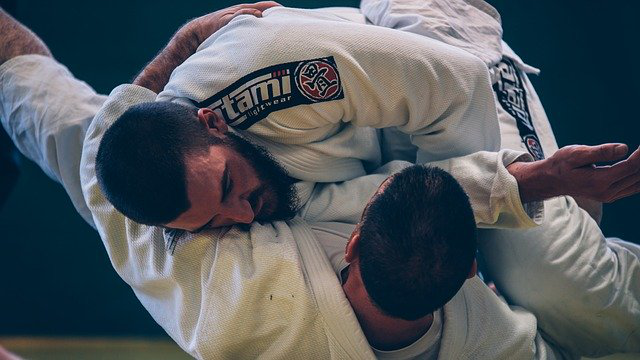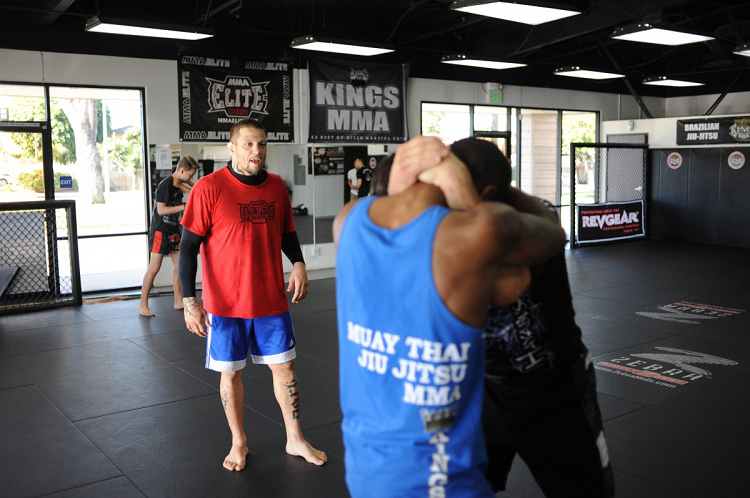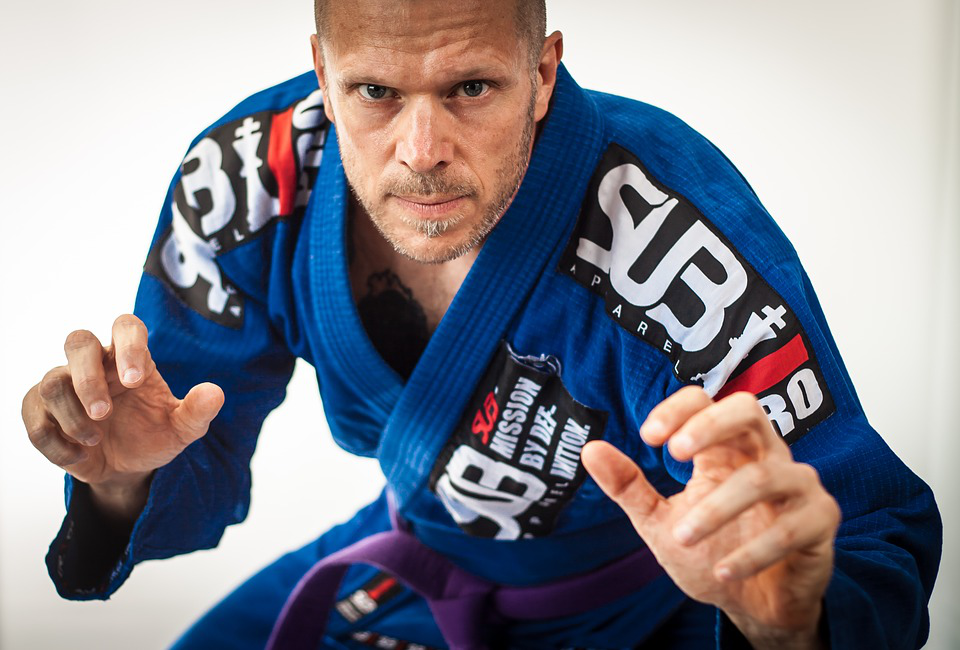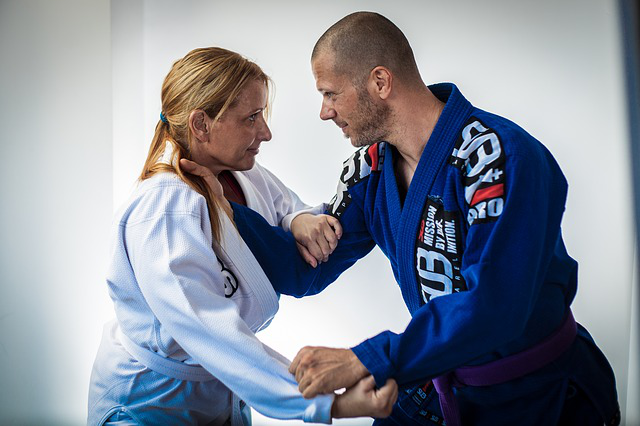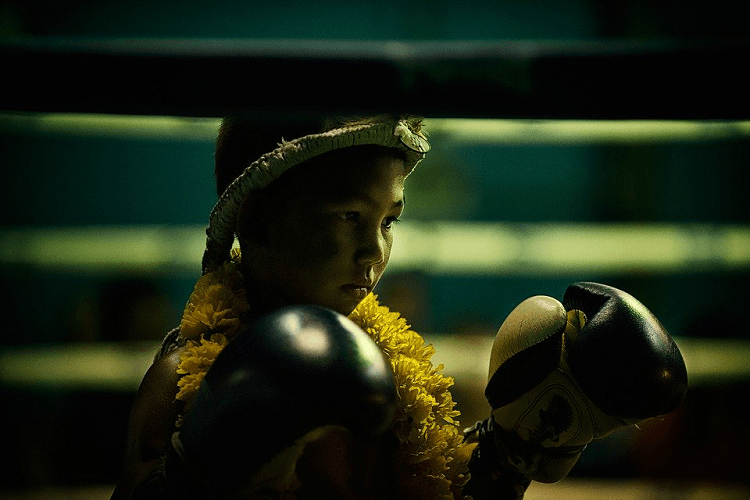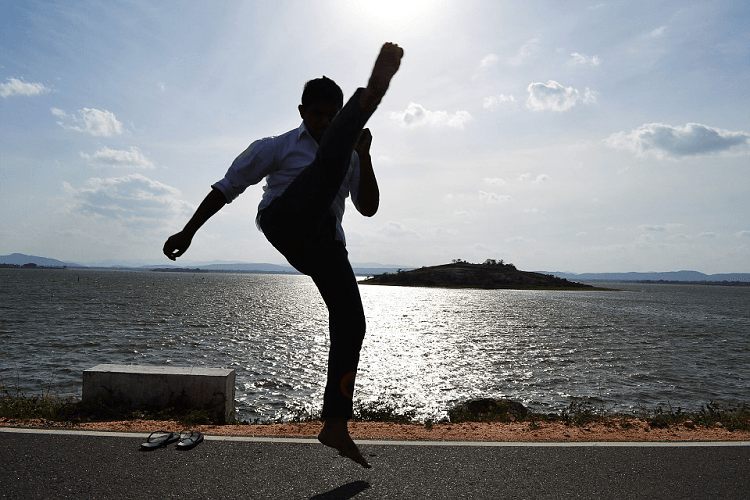Addressing Elementary School Bullying: Why children should practice Karate, Jiu Jitsu and other Martial Arts
Understanding and Addressing Elementary School Bullying
-
What is Bullying
-
Canadian Statistics about Bullying
-
What factors contribute to bullying behaviour?
-
How do Bullies select their targets?
-
When does the target (victim) fight back?
-
How to support someone who is being bullied
-
How to deescalate the verbal confrontation
-
The Advantage and Methodology of Martial Arts
-
Conclusion
Most children encounter their first bullying situation when they start school and do not have the life experience to properly read social cues and assert appropriate social behaviours to deal with bullies who are seeking to take advantage of them. Parents often feel helpless as they drop their child off at school and hope that the other adults in the building will intervene when necessary. The reality is that bullying is still very present in our schools because of the strategies bullies use to select their target.
Section 1 - What is Bullying?
Bullying can best be described as the repeated or habitual use of aggressive tactics (e.g., physical force, threats, or coercion) to abuse, intimidate, or dominate others. One key condition is the perception (by the bully or by others), of an imbalance of social or physical power that separates the victim from the “accepted” social norm (i.e., the victim is often isolated from the acceptable “in” crowd).
In my experience as an elementary school teacher for 20+ years, I have noted three primary types of bullying: verbal, social, physical.
Verbal bullying this is when one side or bully consistently provokes the target with demeaning, hurtful or unwanted comments. This form of bullying is used more frequently by girls. However, boys also participate in verbal bullying.
Social bullying takes shape in the form of isolating, ignoring, excluding, through a variety of means such as social media, spreading of rumors etc...all may be combined in various ratios to marginalize and demean the target. This form of bullying is used more frequently by girls. However, boys also participate in Social bullying.
Physical bullying occurs when the bully wants to demonstrate superiority over the target by coming into physical contact with the target (pushing, slapping, kicking, tripping, etc.). This type of bullying is favoured by boys because boys tend to be more physically aggressive and less verbal.
| Form of Bullying |
Verbal |
Social |
Physical |
| Bullying Actions and Indicators (the big picture) |
|
|
|
According to the Canadian Institutes of Health Research
Section 2 - Canadian Bullying Statistics
(According to the Canadian Institutes of Health and Research)
Bullying in Canada - http://www.cihr-irsc.gc.ca/e/45838.html
-
At least 1 in 3 adolescent students in Canada have reported being bullied recently2
-
47% of Canadian parents report having a child victim of bullying 4
-
The rate of discrimination experienced among students who identify as Lesbian, Gay, Bisexual, Trans-identified, Two-Spirited, Queer or Questioning (LGBTQ) is three times higher than heterosexual youth 4
-
The most common form of cyber-bullying involved receiving threatening or aggressive e-mails or instant messages, reported by 73% of victims 6
-
Girls are more likely to be bullied on the Internet than boys 6
-
Any participation in bullying increases risk of suicidal ideas in youth 5
-
Canadian Council on Learning – Bullying in Canada: How intimidation affects learning
-
Molcho M., Craig W., Due P., Pickett W., Harel-fisch Y., Overpeck, M., and HBSC Bullying Writing Group. Cross-national time trends in bullying behaviour 1994-2006: findings from Europe and North America. International Journal of Public Health. 2009, 54 (S2): 225-234
-
Kim Y.S., and leventhal B. Bullying and Suicide. A review. International Journal of Adolescent Medicine and Health. 2008, 20 (2): 133-154
-
Statistics Canada – Cyber-bullying and luring of children and youth
-
Statistics Canada – Self-reported Internet victimization in Canada
-
Lee R.T., and Brotheridge C.M. “When prey turns predatory: Workplace bullying as predictor of counteragression / bullying, coping, and well-being”. European Journal of Work and Organizational Psychology. 2006, 00 (0): 1-26
In order to understand these statistics and the indicators that a bully is or is about to initiate a bullying scenario, we need to better understand why people choose to bully others. Then we can better understand our choices of action to address the bullying.
Section 3 - What Factors Contribute to Bullying Behavior
Bullies come in all shapes and sizes, and can cause problems when you least expect it…It is suggested that some of the most common school bullying may be caused by the following situations and circumstances:
-
People can direct frustrations, hurt, anger and difficulty at home or in class to you by bullying.
-
Lack of attention from friends, parents or teachers can make a person bully you, just to feel popular and be seen as ‘tough’ or ‘cool’ and in charge.
-
Some kids have learned to bully from others (parents, brothers or sisters, friends). They have seen others getting their way by being angry, aggressive, or by pushing other people around. They believe that by putting fear in you, they will have the best shot at everything in school or in your neighbourhood.
-
Some people also bully because they are themselves victims of bullying
-
Bad upbringing at home can make people insensitive to other people's feelings and emotions. They are happy to see their classmate depressed, sad and hurt.
-
Watching a lot of violent films (movies and TV), and video games can make a person try out violent things. They usually try them out on people who appear smaller or weaker to themselves. http://eschooltoday.com/bullying/Why-do-people-bully.html
Section 4 - How do Bullies Select their Targets?
See https: //www.livescience.com/8155-bullies-pick-unpopular-kids-study-finds.html
Bullies often have a good sense of the power dynamics within their social group and they use this understanding when selecting a target. Bullies usually know who to stay away from and who to focus their negative energy on.
Often during the initial stages of contact, such as, the first few days and weeks of school, students observe the behaviours and friendships amongst their peers as students naturally gravitate toward students who demonstrate values similar to their own, or values that they admire.
Through careful observation and by periodically poking at the fence (act of testing the resolve and defenses of peers) the bully begins to get a clear picture of who is supported by his/her peers, staff, and even family. These small response assessments provide the bully with an overall evaluation as to who the most vulnerable and easiest targets are within the bullies circle of influence.
Section 5 - When does the Target (Victim) fight Back
To fight back does not necessarily mean to physically fight back at the onset of a bullying incident. There are many ways to fight back without the situation escalating to a physical fight. It is very important to let the bully know that you know and everyone around you should know that you will stand up for yourself with words by addressing the bully in a firm and confident voice stating that you believe this situation is wrong, and to encourage anyone present to get help or come to your aid.
https://www.kidpower.org/library/article/prevent-bullying/ suggests the following about what Bullying victims should do and say when being bullied:
“Coach students to pull away and yell “NO! STOP! LEAVE! HELP!” really loudly. Coach them to yell “STOP! I don’t like that!” Coach them to look the person who is bullying in the eyes and speak in a firm voice with both hands in front of their body with palms facing outwards, like a wall. It this doesn’t work,, practice how to yell for help in a way that will call attention to the problem. . For example, “STOP! GET OUT OF MY WAY! HELP! GET THE TEACHER! ________(name) IS BULLYING ME!” Remind students to leave and go to an adult to report what happened and get help as soon as possible.”
[NOTE: Consider coaching students primarily to draw attention from teachers in ways that don’t make it sound like they are weak and yelling for the teacher to come and help them - nobody likes a snitch, and in my mind it weakens the child’s standing with the Bully in question - yelling “STOP” or “DON’T DO THAT” or “LEAVE ME ALONE AND DON’T PUSH ME” may be better than yelling for a teacher to come help, and it serves two purposes: 1- it uses the power of “voice command” which can cause the Bully to back off at the sudden startling escalation, and 2 - it gets the teacher’s attention, without actually yelling for “help” from the Teacher - this doesn’t make the child appear weak in front of the Bully (weakness can attract aggressive bullies)]
Physical responses to physical assault scenarios require in depth training by trained professionals. Please see Section 7.
Section 6 - How to Support Someone who is Being Bullied
-
Tell a teacher or an adult;
-
Go with the person being bullied and explain what happened to the teacher;
-
Support the person being bullied by helping them to tell their parents;
-
Tell your parents/guardians what's happening and ask them to the teacher or Principal;
-
Declare to your friends that you all should and will make it clear to the person doing the bullying that you don't like what they're doing;
-
Keep notes of what you have seen going on so that you can give a teacher a reliable record of what has been happening.
Section 7 - How to deescalate the Verbal Confrontation (Diffusion Strategies)
De-escalation or “diffusion” is your most powerful weapon against an aggressive encounter, and is particularly useful in controlling an aggressive Bully. If you don’t give the Bully what they are seeking, they will eventually go away and this is the most powerful aspect of using your “diffusion toolkit”
Focus on You First
In order to diffuse, you most control the encounter (can be hard for the uninitiated). So the first step in defusing any aggressive encounter is to check your attitude first, and remain calm and observant. Below are some key considerations:
Stay Calm: Anger, fear, and excitability can all lead to an escalation of an otherwise difficult situation. By maintaining a sense of controlled calm you also put your Bully more at ease. This is the reverse of many techniques actually employed by Bullies to intimidate you, but this can serve as a method to calm an irrational situation. Maintaining calm can also help you to better assess the situation to develop strategic alternatives, think your way to a solution, and help you to focus on controlling the natural inefficiencies created by a surging dump of adrenalin into your system.
Don’t forget to Breathe! Yes, I know it seems too simple to state in words, but a natural reaction to fear is to stop breathing and many of us unwittingly forget to breathe at the time when breathing is most important. Breathing is a big part of staying calm, and oxygen helps us to stay calm and more quickly process the adrenalin in our system. If the situation ultimately escalates to physical violence, oxygen will also be important to prolonging your stamina (whether the response is “fight” or “flight”).
Always Check Your Attitude First: In any escalating situation, always take a deep breath and consider your own actions and words, and how this may have contributed to the situation. Any instance of Bullying cannot be justified and is cause for concern, but often our own words or actions can lead to an escalating situation – particularly if we are being taunted or teased into a situation. So as the encounter escalates, consider your own contribution to the situation and how your words or actions may have led you to the encounter – this will help you greatly when using the other diffusion strategies outlined below.
Set your Boundaries: Boundaries in this circumstance consist of both physical boundaries and situational boundaries. They key to this principle is to control your physical boundaries where possible, and determine early on what your “tipping point” of no return will be. This is the point when a physical or situational boundaries has been crossed, and when the time for talking has ended and the time for physical action has arrived. Common tipping points may be when the person crosses a fundamental “line in the sand”, puts their hands on you, or otherwise demonstrates that physical confrontation is imminent. It is important to establish this boundary early in the encounter, so that you are prepared to physically seize the initiative, if necessary.
Focus on How To Communicate
The next step in de escalating any aggressive situation is to understand how to communicate properly. Communicating is a very complex process, and nowhere in the animal kingdom is this process more complicated than it is with humans. Proper communication not only involves talking, but also listening, and paying close attention to physical cues, or body language. Proper communication often means “closing our mouths, and opening our ears”, but there are a number of complex phases in the communication cycle:
-
Speaking the Message: The first distinct phase is the “speaking” phase which can be exemplified by the initial statement or message communicated to you by the other party (or communicated by you). This message may involve both verbal and nonverbal aspects, but body language and tone/inflection play a key role in how the message is perceived.
-
Listening: The second distinct phase is the “listening” phase in which you hear and interpret what was just said to you, and you develop a basic understanding of the message. The problem is that what a person says, and what you actually hear may be two very different things. For example when telling me something, there is what you actually said, and then there is what I thought you said. Thus, my understanding of the situation may be faltered, and what you just said to me may not be what I actually heard. Said differently, we humans have a bad habit of pre-supposing a statement or trying to predict or “think ahead” of the actual words that are spoken to us. At times we even have pre-conceived notions of what someone is about to say to us (or what we wish they would say), and this often clouds the message. So learning to close the mouth and properly “listen” to the message can make a world of difference in diffusing aggression.
-
Noise: To make matters more complicated, there is the concept of “noise” that is represented by any environmental factor that can add to the confusion of the message. This noise may be actual ambient noise in the environment, distractions created by others, distractions in our natural environment, and even cultural differences that may be prevent us from achieving a common understanding. Noise can also be created by preconceived notions about a situation, or stereotyped conceptions about the individual you are dealing with (e.g., racial stereotypes, cultural stereotypes, prior behavior patterns or discussions, etc.).
-
Confirmation: As a result, this last phase becomes critically important in the communication process, and this is the phase of “confirmation”. Once you receive a message and interpret your understanding, you must repeat the message (and your understanding of that message) to the other party and ask if your understanding is correct. This may unfold with similar language such as “if I understand correctly, you are asking me to ….” or in another example, “Based on what I am hearing, you would like to …”, or “So what you are telling me is …” These are common examples of repeating the initial message as a question, in order to confirm that you have understood the message correctly. A common understanding of the message is critical to resolving the situation.
The Do’s and “Don’ts of De Escalating Confrontation
The section below owes credit to Richard Dimitri, Drew Guest, and Luis Rivera, PhD.
There are a number of important verbal and physical cues to employ during the de-escalation phase of any encounter, but in quick summary, you don’t want to Threaten an individual, you don’t want to Argue with an individual or contradict them, and you don’t want to Challenge an individual’s status or authority. You also cannot Order or command and you don’t want to Shame or insult a person or otherwise convey a general indignation to the individual, or anyone in that person’s group - thus, it is important to leave the aggressor with a tactful way out of the confrontation. This quick summary can be abbreviated as “TACOS”
Understanding how to make your T.A.C.O.S. work for you:
Do NOT:
(T) Threaten: Do not threaten the Bully or give them an ultimatum, such as,” if you don’t stop, I’m gonna …”. This will only embolden the bully and give them what they are seeking – a reason to escalate the situation, or otherwise take things to a physical level. Fleeing from a threat is not an option for the Bully, so don’t push them into a corner. It doesn’t take a genius to realize that communicating threats is not a great way to de-escalate a potentially violent encounter (it is also a great way to end up in a fight). However, it is critically important to appreciate what a true threat might be as it is not always obvious. Communicating threats to a person certainly includes such statements as “I’m going to kick your butt”, or “if you step to me, I’m, gonna knock you out”. These are two classic examples of a clear threat, but sometimes a threat is not so readily discernable.
For example, yelling at somebody that you are “going to call the teacher”, or stating that “if you don’t get away from me I am calling security” is also a form of threat to a potential Bully that can further escalate the situation. Similarly, threatening to go grab your buddies, or stating that “my Dad is gonna get you” or similar statements can also pour fuel on the fire. Statements such as these are a clear threat to the safety and comfort zone of a potential attacker, and should be avoided.
There is no need to announce to the Bully what your true intentions are. Focus on de-escalating through non-threatening means, and keep your internal thoughts to yourself. If you have instructed someone to call the teacher, or if you do have buddies elsewhere in the room to help control the physical escalation, keep this knowledge to yourself until the action is required. Communicating your knowledge publicly will only cause problems, and keeping any such knowledge to yourself will amplify your strategic positioning, should the situation result in violence.
(A) Argue: Do not Argue! Even if a Bully is making untruthful statements or accusations against you, it is important not to directly contradict the Bully. An aggressor does not want to be told that they are wrong, and to do so will only aggravate an escalating situation. As aggression increases, the aggressor’s rationality is compromised – so arguing or contradicting will get you nowhere! Disagreeing may be seen by the Bully as an insult that requires defense – generally by applying more aggressive tactics, so try not to argue with a Bully.
(C) Challenge: Generally a challenge against an aggressive Bully is where the victim dares the Bully to take action on a threat or aggressive stance. For example, telling the Bully “oh yeah, what are you going to do about it.” or telling them “go ahead, I dare you” are examples of a “challenge” that will only escalate the Bully’s behavior. Challenges can also take the form of body gestures, such as “stare-downs” or finger-pointing, or similar gestures that indicate you want to challenge the Bully’s words or actions.
(O) Order or Command: Commands can take many forms, but statements like “calm down” or “don’t do that” seem like simple statements at a quick glance, but the Bully will see this as a form of aggression. Nobody wants to be ordered around, and a Bully definitely does not want to be reprimanded for their actions or words.
(S) Shame or Disrespect/Insult: Oftentimes a Bully has concerns about their own worth or self-esteem, so no matter how angry you become, do not call the Bully names or insult the Bully in any way that would shame or disrespect him/her (especially in front of others). An aggressive Bully is often trying to bolster his/her own status in the group, so disrespecting the aggressive Bully will only make things worse.
So if we can’t Threaten, Argue, Challenge, Order, or Shame (TACOS), then what can we do?
Things you should Do
Ignore the Minor Taunts: Although it is not always a good idea to ignore an aggressor in a potentially physical encounter, ignoring certain precursory (early) actions of the Bully can reduce the risk of increased aggressive behavior down the road. As an example, try not to respond to the casual threats or taunts that a Bully may throw at you – reacting to casual taunts gives the Bully exactly what he/she is looking for, and this will only reinforce the Bully’s behavior and will lead to more taunts (and eventual escalation). So if the Bully throws out casual insults or taunts when you walk by to take your seat in class, try not to respond negatively and let it roll off the shoulder with a casual smile or nod of the head – in the martial arts, world we call this “rolling with the punches”. This can reward you down the road.
Become a Mirror (Build Rapport): Animals in the wild tend to flock or run together with members of their own species, and humans are no different – we like to be around others that are similar to us in behavior and mannerisms. The most important component of developing relationship or connection (i.e., “rapport”) is to mirror a person’s language, actions, or tonality – knowing that someone else is “just like you” naturally creates a feeling of unity and belonging. This does not mean “mimicking” or “mocking”, but rather you are trying to approach the Bully at his/her level and in a way that makes the aggressor feel more comfortable. For example, if they tend to stand in a certain way, or hold their arms in a certain way – try subtly matching their gestures in order to mirror their natural actions. Similarly, if they frequently use certain terminology or abbreviations, try to match this so that you appear more “in tune” with the aggressor. This is also a great technique to build everyday rapport BEFORE an aggressive Bullying situation develops.
Forced Teaming: Similar in concept to Becoming a Mirror, you want to try to use inclusive language to further build rapport with an aggressive Bully – this is a concept known as “forced teaming” that can work in favor of a victim. This means focusing on “we” rather than “I” in your statements, and posing statements as questions (rather than commands or threats). Examples of this may include, “how can we make this better”, or “What can we do to resolve this”, or “We are in the same boat here …”, or “how can we keep this from becoming a problem tomorrow”, etc.
The use of subtle humor can always help lighten the situation and diffuse an aggressive encounter and help to develop a bond, but make sure that the humor is not cast at the Bully. If you make a humorous statement to break the ice, make light of a situation or even at yourself, but avoid making the Bully the brunt of any jokes.
Tone it Down a Notch or Two: Similar to bonding with the aggressor, try asking them questions rather than arguing or threatening. Asking a simple an innocuous question is a great way to break the tension and change the tone of an escalating encounter. Questions such as “what is it that is upsetting you” or “how long have you felt this way” approaches the situation on a more personal level, and demonstrates that you have concern for how the Bully feels. Questions should be relevant to the situation and should play off the aggressive behavior or statement of the Bully (don’t ignore the Bully), but as you question you should become softer in tone, maybe suggesting at a certain point that you sit down and discuss more calmly (but note - not all Bully’s will want to resolve the situation so easily).
Always leave the Bully with a graceful exit: Very important in your “diffusion toolkit” is the focus on ensuring that the Bully has a graceful exit - particularly if an aggressive situation occurs in front of a group (Bully’s love an audience, so most bullying will occur while in a group of fellow students). So once the aggressive situation has been toned-down to a comfortable level, you should offer the Bully a graceful door through which he/she can exit and back down. Often this means giving up something (such as “proving you are right”) and sometimes this can be done by offering a compromise, such as “I’ll make a deal with you – if we agree not to get angry at each other again, then I will …”. Offering a rational compromise that gives the Bully some aspect of what he/she is seeking is always a graceful exit. It is also important to remember that in do this you will have to recognize the Bully’s ego, so this is no time to “get in the last word” in an argument. Give the Bully the last word, even if he throws an insult as he/she walks away – remember, as long as the Bully is walking and talking, the Bully is not a physical threat to you.
Pre-emptive De-escalation is Key: Finally – the most important thing to remember is that you must ACT FIRST and QUICKLY, when using these techniques against a school Bully. This means that you should attempt to de-escalate, build rapport, and deflect aggression the moment a person displays Bullying behavior towards you (don’t wait until mid-school-year). If you wait until the Bullying has continued for many weeks or months, these de-escalation techniques will become less effective because you have now become a willing victim of Bullying behavior – this further emboldens the Bully to display aggressive behavior, because you have willingly accepted the taunts and abuse and have labeled yourself as an “easy target”.
This is especially important if you are attending a new school with students that you have not met before. As the “new kid on the block” you are naturally susceptible to Bullying, simply because you are a new student that has not yet earned his/her place in the social status of the new group. When attempting to join any new group, you must be accepted by that group before you are given social status. So this is the time where building rapport with your fellow classmates is the most crucial, and it is the time where employing diffusion strategies against a potentially aggressive Bully is most important.
A Quick Guide on Dos and Don’ts
Verbal De-escalation Techniques to Embrace
-
Use of pre-contact cues in your favor
-
Build rapport (a personal connection) – If you don’t know them well, ask them their name, and offer yours
-
Forced teaming can also be used to build rapport (bring “we” into the picture, and avoid terms such as “you”, “him” or “her” as these terms sound impersonal, and can be insulting in some circumstances
-
Listen and use words such as “I hear you” or “I am with you on that”, etc. to avoid escalating arguments
-
Use of subtle humor to lighten the mood
-
Ignore or deflect casual insults (don’t give the Bully any ammunition)
Body Language and Gestures to Avoid
-
Finger-Pointing (a threat or Challenge)
-
Shoulder Shrugging (shows lack of caring and shows disrespect to the Bully)
-
Stiff Movements or walking in threatening manner (this can be seen as a Challenge or pre-contact que)
-
Speaking through clenched teeth (shows anger and a lack of listening skills)
-
Quick Movement (may startle or threaten)
Section 8 - The Advantage and Methodology of Martial Arts
Good Martial Arts Instructors are clear, respectful, in charge, enthusiastic, and flexible (not defensive or irritable when asked questions). This assists in providing a controlled learning environment where a skilled instructor can easily assess, evaluate and plan for future success and learning.
The approach is action-oriented rather talking-oriented. People generally remember more about what they have seen than what they have been told. Martial Arts programs involve demonstrating and doing, over explaining. Through role-play and repetition of responses, students develop a confidence and ability to respond to bullying that is controlled and progressive.
Learning in Martial Arts is success-based. Whether you are a child or an adult learning Brazilian Jiujitsu, Karate, Wrestling, or Judo, the learning environment promotes progression through the curriculum in a highly positive way. Classes are structured in a go step by step manner, beginning with what each student actually knows. Success is gaged as progress for each student, instead of perfection according to some unwritten standard known only by the teacher. Students are coached at all practices so that they can do improve their techniques as much as possible. This immediate feedback assists with student progress and the attainment of rank/ goals.
For the sake of learning personal safety skills and immediacy, the approach of practical self-defense programs that are very focused on preventing, assault, abduction and abuse should be most highly sought after. After teaching martial arts for over 25 years, I can tell you that traditional martial arts are beautiful and effective, but require a far greater amount of time to become capable of defending oneself effectively. Good self-defense programs focus on teaching in a manner that cultivates a reflex response. This is important to note because students may learn to mechanically go through techniques without being taught to act on intuition and reflex. The approach should be more focused on practical self-defense and strategies during physical confrontations (ie.: an emphasis on grappling and applications on the ground for a single attacker and an emphasis on striking for multiple attackers).
Section 9 - Conclusion
The negative effects of bullying on children range from: low self-esteem, to other mental health issues like depression, anxiety, sleep and eating problems and reduced affect, as well as, apathy toward activities they used to enjoy.
As a parent or other significant figure in a child’s life, it is important that one is vigilant in assisting children as they learn to navigate the positive and negative (bullying) social situations they will encounter in their lives.
Remember: “Give a man a fish and you feed him for a day; teach a man to fish and you feed him for a lifetime.” If we prepare our children for bullying situations, then they will be better equipped to contend with similar circumstances throughout their lives.
